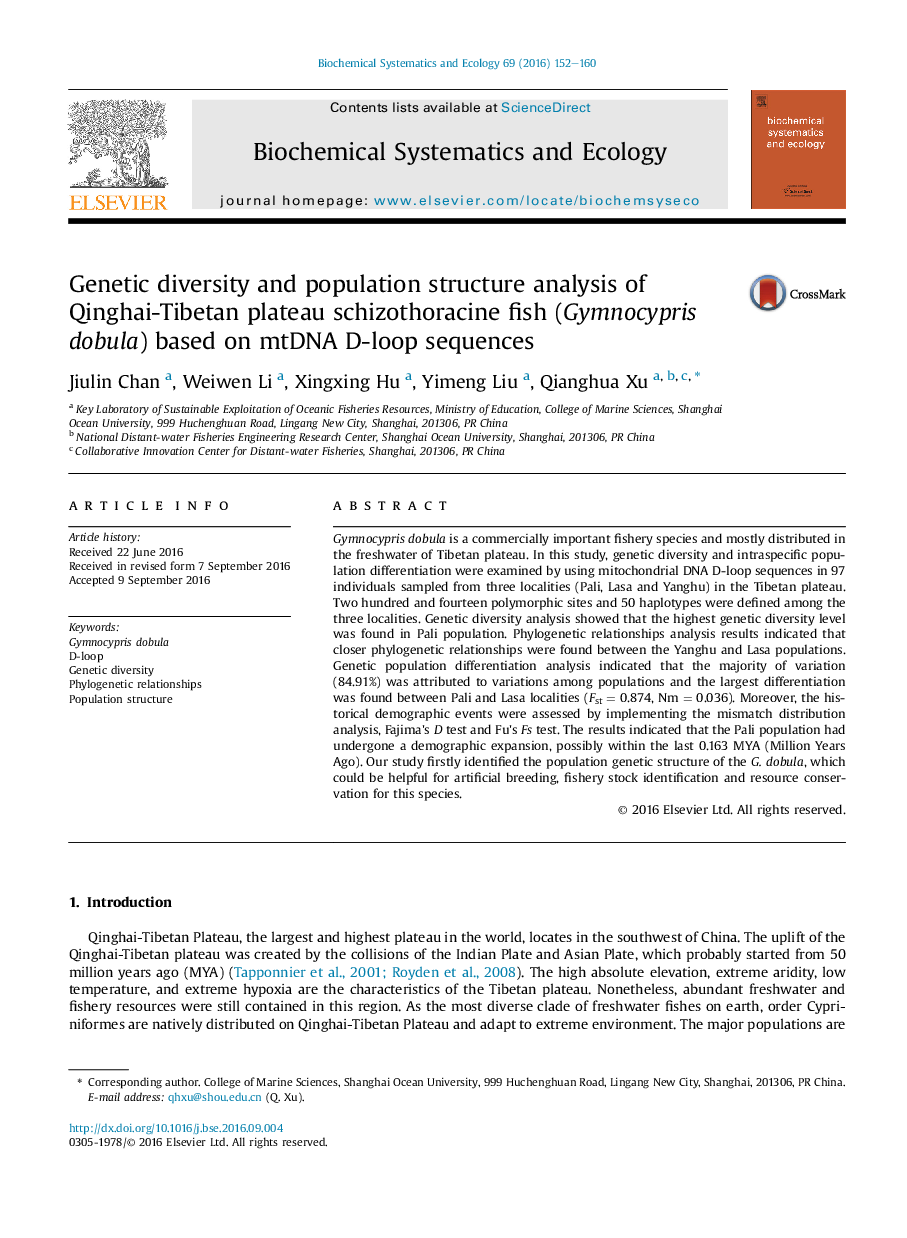| Article ID | Journal | Published Year | Pages | File Type |
|---|---|---|---|---|
| 7767823 | Biochemical Systematics and Ecology | 2016 | 9 Pages |
Abstract
Gymnocypris dobula is a commercially important fishery species and mostly distributed in the freshwater of Tibetan plateau. In this study, genetic diversity and intraspecific population differentiation were examined by using mitochondrial DNA D-loop sequences in 97 individuals sampled from three localities (Pali, Lasa and Yanghu) in the Tibetan plateau. Two hundred and fourteen polymorphic sites and 50 haplotypes were defined among the three localities. Genetic diversity analysis showed that the highest genetic diversity level was found in Pali population. Phylogenetic relationships analysis results indicated that closer phylogenetic relationships were found between the Yanghu and Lasa populations. Genetic population differentiation analysis indicated that the majority of variation (84.91%) was attributed to variations among populations and the largest differentiation was found between Pali and Lasa localities (Fst = 0.874, Nm = 0.036). Moreover, the historical demographic events were assessed by implementing the mismatch distribution analysis, Fajima's D test and Fu's Fs test. The results indicated that the Pali population had undergone a demographic expansion, possibly within the last 0.163 MYA (Million Years Ago). Our study firstly identified the population genetic structure of the G. dobula, which could be helpful for artificial breeding, fishery stock identification and resource conservation for this species.
Related Topics
Physical Sciences and Engineering
Chemistry
Organic Chemistry
Authors
Jiulin Chan, Weiwen Li, Xingxing Hu, Yimeng Liu, Qianghua Xu,
